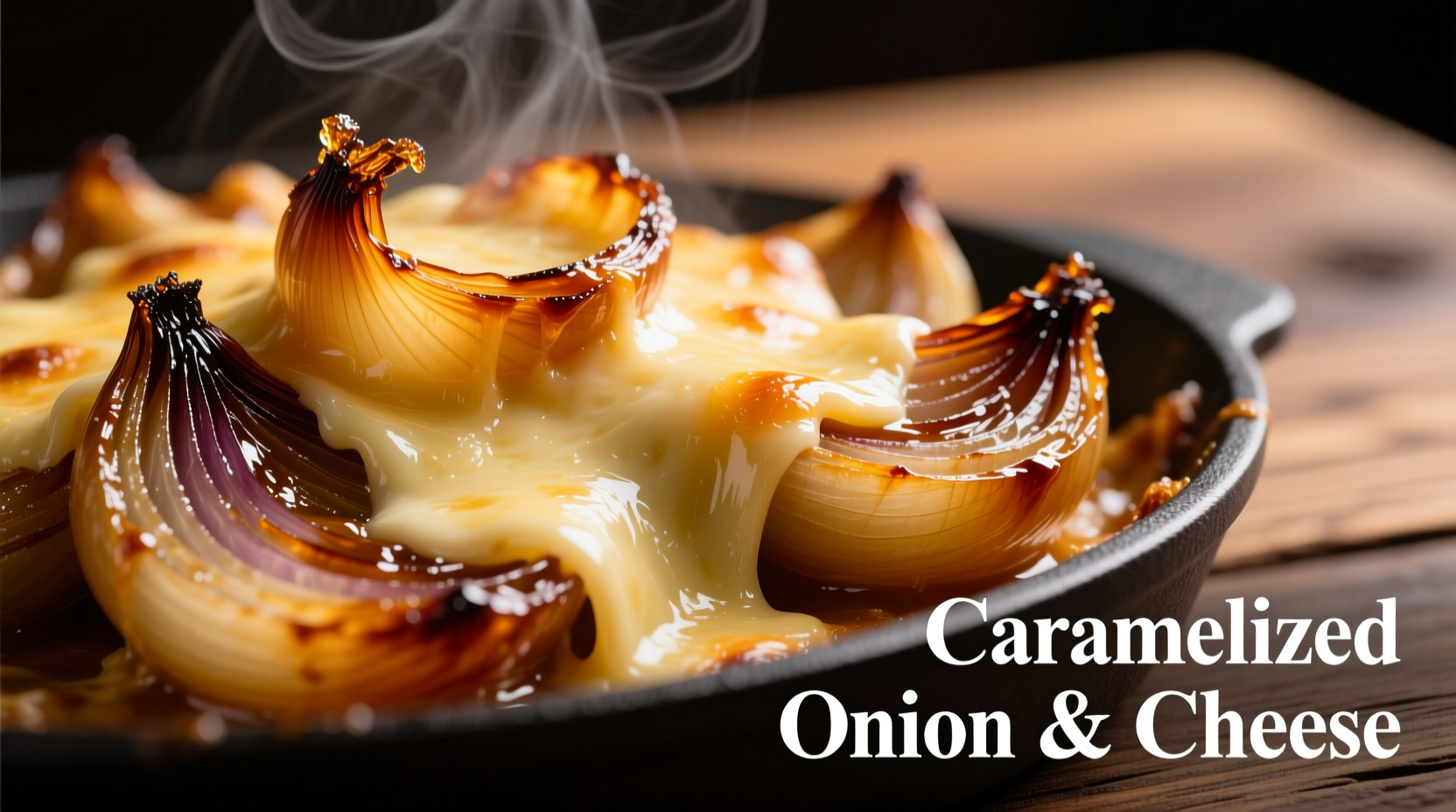Transform ordinary meals into extraordinary experiences with this simple yet sophisticated ingredient combination. Chefs and home cooks alike prize caramelized onion cheese for its ability to add complex flavor layers with minimal effort. Unlike raw onion preparations, the caramelization process breaks down harsh compounds while developing natural sugars, creating a mellow sweetness that perfectly complements cheese's savory depth.
The Science Behind Perfect Caramelized Onion Cheese
Caramelization isn't just cooking—it's controlled chemical transformation. When onions cook slowly over low heat, their natural sugars undergo the Maillard reaction and caramelization simultaneously. This dual process creates over 500 flavor compounds that give properly caramelized onions their distinctive complexity. The ideal temperature range for this transformation sits between 230-320°F (110-160°C), where sugars break down without burning.
Adding cheese at the right moment preserves both texture and flavor integrity. High-moisture cheeses like Gruyère or Fontina melt smoothly into the onion mixture, while aged cheeses like sharp cheddar provide bold flavor accents. The fat content in cheese also helps carry and distribute the onion's volatile flavor compounds throughout your dish.
| Cheese Type | Best For | Melting Quality | Flavor Profile |
|---|---|---|---|
| Gruyère | Fondue, grilled cheese | Excellent | Nutty, slightly sweet |
| Fontina | Pizza, baked dishes | Superior | Mild, buttery |
| Sharp Cheddar | Burgers, dips | Good | Tangy, robust |
| Blue Cheese | Steak toppings, dressings | Poor | Strong, pungent |
Step-by-Step Preparation Guide
Creating exceptional caramelized onion cheese requires patience and attention to detail. Rushing the process leads to burnt onions and bitter flavors that ruin the final product. Follow these professional techniques for consistently excellent results:
Essential Equipment
- Heavy-bottomed skillet (cast iron or stainless steel)
- Sharp chef's knife
- Wooden spoon or heatproof spatula
- Microplane grater for hard cheeses
Caramelization Timeline
The transformation from raw onion to deeply caramelized delight follows distinct stages:
- 0-20 minutes: Onions release water and soften ("sweating" stage)
- 20-40 minutes: Onions turn translucent and begin browning
- 40-60 minutes: Onions develop rich golden-brown color and sweet aroma
- 60+ minutes: Onions reach deep mahogany color with complex flavor
According to culinary research from the Culinary Institute of America, extending caramelization beyond 45 minutes significantly increases the concentration of flavor compounds while reducing harsh sulfur notes by up to 70%.
Practical Applications for Home Cooks
Caramelized onion cheese shines in applications where its complex flavor can enhance rather than dominate. Consider these proven uses:
Sandwich & Burger Transformations
Spread caramelized onion cheese on artisan bread before adding your main protein. The cheese creates a flavor barrier that prevents sogginess while adding complementary notes. For burgers, mix one tablespoon of caramelized onion cheese per patty directly into the meat before shaping.
Dip & Spread Creations
Combine caramelized onion cheese with cream cheese (3:1 ratio) for an instant party dip. Add a splash of white wine vinegar to balance richness. This preparation stays stable for up to 72 hours refrigerated—perfect for meal prep.
Pasta & Grain Enhancements
Stir two tablespoons of caramelized onion cheese into cooked pasta during the final minute of cooking. The residual heat melts the cheese while the starches help it emulsify into a light sauce. Works especially well with whole grain pastas that need flavor enhancement.

Avoiding Common Mistakes
Even experienced cooks make these critical errors when preparing caramelized onion cheese:
- High heat cooking: Causes uneven browning and burnt spots. Always use medium-low heat.
- Overcrowding the pan: Creates steam that prevents proper caramelization. Cook in batches if necessary.
- Adding cheese too early: Causes separation and grainy texture. Wait until onions reach deep golden color.
- Using pre-shredded cheese: Contains anti-caking agents that prevent smooth melting.
Food safety considerations matter too. The USDA recommends consuming cheese-based preparations within four days when refrigerated properly. Never leave caramelized onion cheese at room temperature for more than two hours to prevent bacterial growth.
Storage & Shelf Life Optimization
Maximize freshness with these professional storage techniques:
- Cool completely before storing (prevents condensation)
- Use airtight containers with minimal headspace
- Place parchment paper directly on surface to prevent skin formation
- Refrigerate for up to 5 days or freeze for 3 months
When reheating, add a teaspoon of milk or cream per cup to restore smooth texture. Microwave in 30-second intervals, stirring between each, to prevent overheating.
Flavor Variations to Explore
Customize your caramelized onion cheese with these chef-approved additions:
- Herb-infused: Stir in fresh thyme or rosemary during final cooking minutes
- Balsamic enhancement: Deglaze pan with 1-2 tablespoons balsamic vinegar after caramelizing
- Spicy kick: Add pinch of red pepper flakes with the cheese
- Umami boost: Mix in 1 teaspoon soy sauce or Worcestershire during caramelization
When Caramelized Onion Cheese Works Best
Understanding context boundaries prevents culinary disappointment. This preparation excels in:
- Rich meat dishes (steak, roast beef, lamb)
- Hearty sandwiches and burgers
- Cold-weather comfort foods
- Dishes needing flavor complexity without heat
Avoid using caramelized onion cheese in:
- Delicate seafood preparations
- Light summer salads
- Dishes already featuring strong competing flavors
- Cooking applications requiring precise cheese melting properties











 浙公网安备
33010002000092号
浙公网安备
33010002000092号 浙B2-20120091-4
浙B2-20120091-4